Bai Liu is an artist, designer, illustrator and writer based in China whose multidisciplinary work is shown throughout the world. 馍 / Mo was showcased at the London Design Festival in September. Why Do We Love Cats? launched on the VRChat platform in August. It is a unique collaboration with Jiaxun Cao, Qingyang He, Zhuo Wang et al. and is led by Professor Xin Tong of the Duke Kunshan University Human-Computer Interaction Lab and Professor Ray LC of the City University of Hong Kong.
A: You’re an artist, designer, illustrator and writer. How do you combine these practices in your multidisciplinary work?
BL: I often describe myself as an interdisciplinary artist on my various social accounts; in my opinion, art creation should not be defined by the material medium in the real world. My background has given me a deeper understanding of contemporary art. You can think of all my work as being based on the core concept of “beyond mediums”. Whether it’s clothing, fabric, illustration or painting it’s really just a medium that I use to convey my interesting or profound ideas. I never want to define myself in a narrow field. Art should be unrestricted and you should not let the medium handcuff you.

A: Your practice investigates “the mind state of modern people.” What drew you to this subject?
BL: I think this is a very interesting but also worthwhile subject to think about. It seems to me that contemporary people are often in a state of confusion and bewilderment without realising it. In my project Why Do We Love Cats?, for example, I gathered 100 cat lovers from different social backgrounds, genders and ages before starting the project. When I asked the question “Why do you love cats?”, everyone in the room was confused, and after a few moments they still couldn’t answer why they loved cats or why they chose to keep them.
Just like the “ultimate question of the universe” mentioned by Douglas in his novel The Hitchhiker’s Guide to the Galaxy, the supercomputer “Deep Thought Deep Thought” is unable to answer the ultimate question of the universe. Perhaps there is no reason for loving cats, loving people or loving art – a thought about an everyday phenomenon may contain a philosophical question about the ultimate truth of the universe. Many tiny things in life actually have no single answer from a philosophical point of view, and I just like to use contemporary art as a magnifying glass to look deeper into the social issues and philosophical logic behind these phenomena.
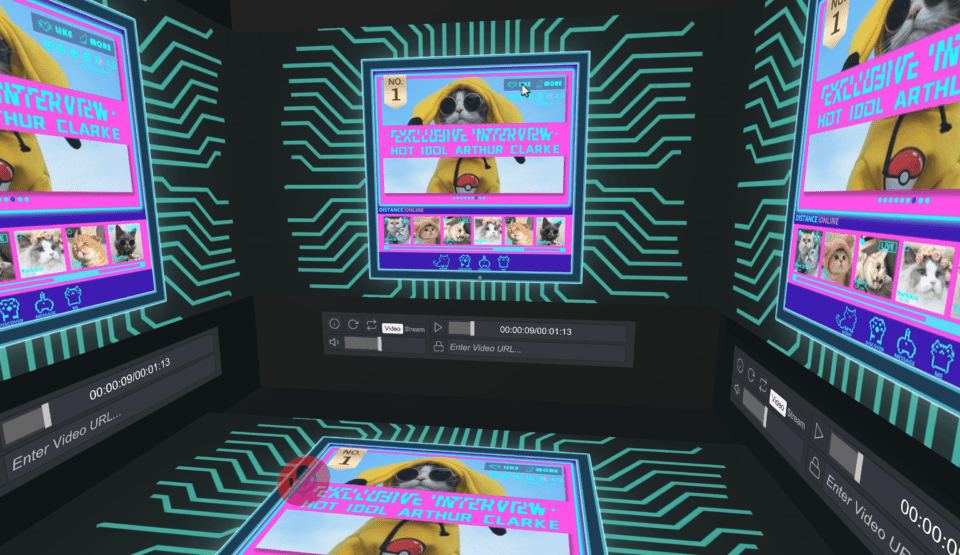
A: Your work was showcased at the London Design Festival in September. Tell us about your featured project 馍 / Mo.
BL: Wow, it really was a very memorable exhibition for me. It was also the 20th anniversary of the London Design Festival this year, so many people saw my film installation work online and offline, and I received many messages from visitors. What struck me was that one visitor from Korea said that my work MO instantly reminded him of his own parents who passed away last year, like the parents depicted in my work. When his family was at its poorest and food was scarce, he and his sister would still be allowed to eat food first. His parents had dedicated their lives to their family and children. I thought that perhaps the beauty of art is to use multiple vehicles to build empathy that transcends borders and races.
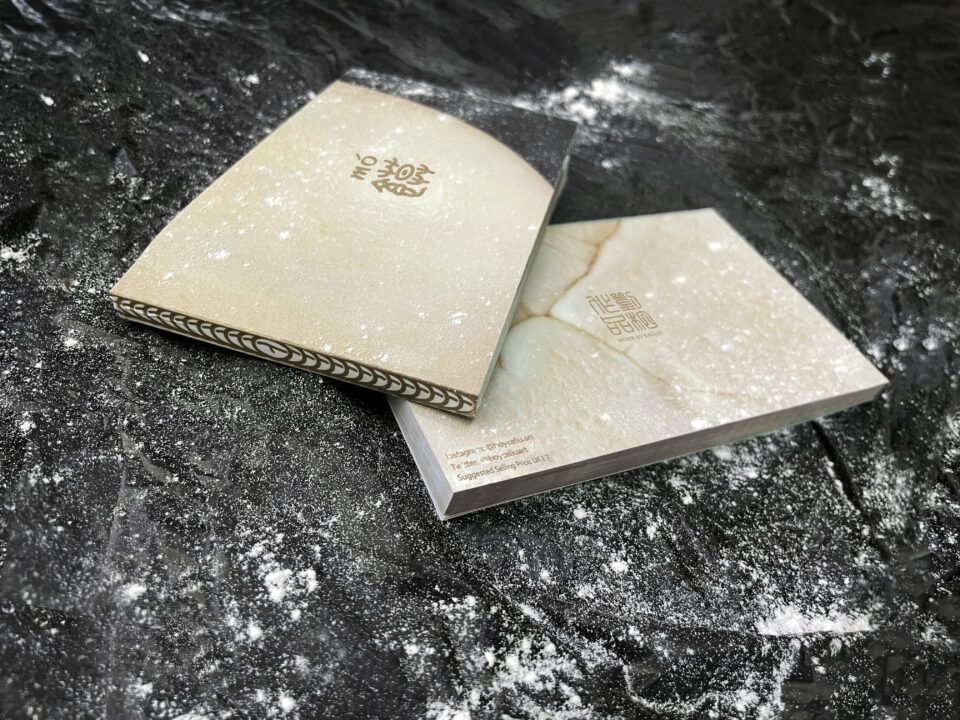
A: 馍 / Mo was part of a wider exhibition on sustainability in China at the London Design Festival. How does the project respond to the climate emergency?
BL: This work focuses on the MO (steamed bread), which is a traditional Chinese staple food, and I present the lifelong bond and connection between Chinese people and MO from a sustainable food design perspective, explaining the mapping relationship between food, nature and human society. I use the traditional Chinese staple food MO as an entry point, focusing on this unique regional food in China. Through the research on traditional food MO and Chinese traditional lifestyle, I put forward my own solutions on how to protect and innovate the food culture with thousands of years of history, and how to awaken people to cherish food: food will be used as a carrier to tell stories of daily life.
A: The London Design Festival exhibition featured 20 works from Chinese youth and designers. Can you tell us about other standout projects from the show? How have they inspired your own work?
BL: Of course. In our section of the festival, I was extremely impressed by the work of Shuhei Aoyama, a Japanese designer and artist based in China, who presented a sustainable architectural transformation of Beijing’s hutongs. I was also inspired by Shuhei Aoyama’s exploration of how modern architecture can better integrate with the natural environment and ancient buildings, just as I was inspired by my clothing design JIN SHAN: THE CYCLE OF LIFE, published in Issue 76 of London Runway, in which I explored the wonderful connections between fabrics and plant growth, traditional tie-dye and restoration techniques. Sometimes it’s surprising to see unrelated things can be harmoniously combined by artists.

A: In August, you launched Why Do We Love Cats? on VRChat. Why did you choose to share the project on this online virtual world platform?
BL: The second chapter of the art project Why Do We Love Cats? is itself an interesting exploration of my approach to the art mediums. The world has been witnessing tremendous changes from manual drawing, to printing, to black-white screens, to colour electronic screens, and finally to the metaverse and web 3.0 era. But for art, is the digitisation of art the ultimate end?
This is why I have chosen to create a film installation work in the VR gallery, thus formally asking this question to everyone. I also thought that the more immersive visual experience of the six screen walls of the VR gallery might better help visitors to understand the core concepts of the aesthetic homogenisation, the information cocoon and the fate is manipulated of the present in my work.

A: How does exhibiting your work in digital worlds differ to physical spaces? Do you have a preference?
BL: I believe that the digital world is only a different medium to the physical space, and that I always choose the most appropriate medium for the exhibition based on the core concept of the work I am creating. I have always believed that the medium should not be a constraint on the artist’s imagination and creativity.
A: Why Do We Love Cats? is a collaboration with Jiaxun Cao, Qingyang He, Zhuo Wang et al. What do their perspectives bring to the piece?
BL: It was an honour to work with the technical teams from City University of Hong Kong and Duke Kunshan University on this project to develop a VR gallery. As the technical team, they gave me a number of curatorial scheme on how to better represent the concept of being “imprisoned by information”, and together we chose to build a “black box” in the VR gallery to simulate the form of an information cage.
A: Why did you choose to focus on our relationship with cats, a typical pet, in Why Do We Love Cats?
BL: It’s very simple: because I have a cat who is two years old. One day I looked at my lovely cat and the question “Why do I love cats?” popped into my head. Was it an impulse or was it something that had been planned for a long time? I don’t seem to know the answer to this question either. Especially when I asked all my friends who had cats around me this question, I realised that they didn’t know the reason for loving cats either. So I decided to document this interesting phenomenon of life with my artwork.
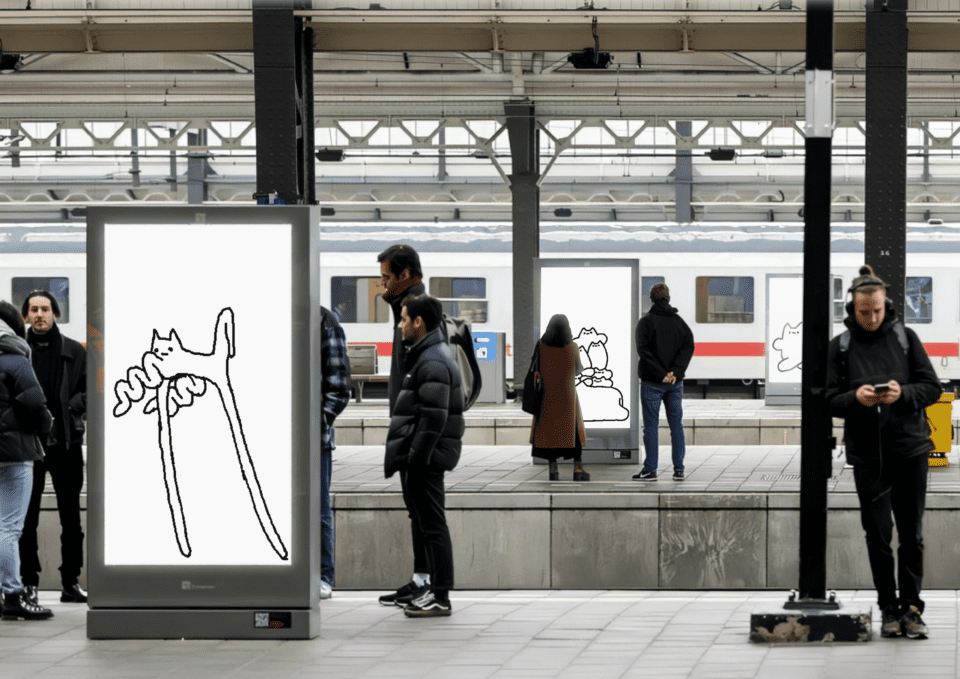
A: Why Do We Love Cats? I-VI sees “seemingly care-free and happy-go-lucky- cats living in two-dimensional worlds. How does this reflect on the existence of humanity?
BL: The group of motion artworks have been rotated and exhibited on electronic screens across the Netherlands through DEMO-Design in Motion Festival 2022. These fun-looking cats are hiding a thought that I want to convey to everyone: Do these happy-go-lucky cats ever feel the real happy? As two dimensional beings who live their whole lives in electronic screens, they are imprisoned in dimensions without knowing it.
They are monitored by us living in three dimensions, but when you think about it, humans are also cats in an electronic screen, and our three-dimensional world may also be observed and watched by beings in higher dimensions.
A: You’re currently a student at the University of Southampton, investigating the integration of art and artificial intelligence. Tell us about a project you are currently working on.
BL: As in my recent anti-war project, I researched 500 people around the world who had dreamt of war scenes in their sleep and asked them to describe their dreams in doodles on A4 paper. I then used a computer algorithm to put all the graffiti collected into the AI robot’s neural network and, through deep learning techniques, allowed the AI robot to create a long, interesting and thought-provoking poem in English based on the graffiti.
The project explores whether the AI’s view of war is also a reflection of human attitudes towards war, while the seemingly unrelated fields of psychology, literature, painting and AI technology are somehow combined in a clever and interesting way. I believe that the greatest value of artwork is definitely not to contribute to a particular type or genre of art, but to use the humorous, funny and ironic visual language of artwork to help consumers and various groups to perceive and think about your relationship with society at the moment.
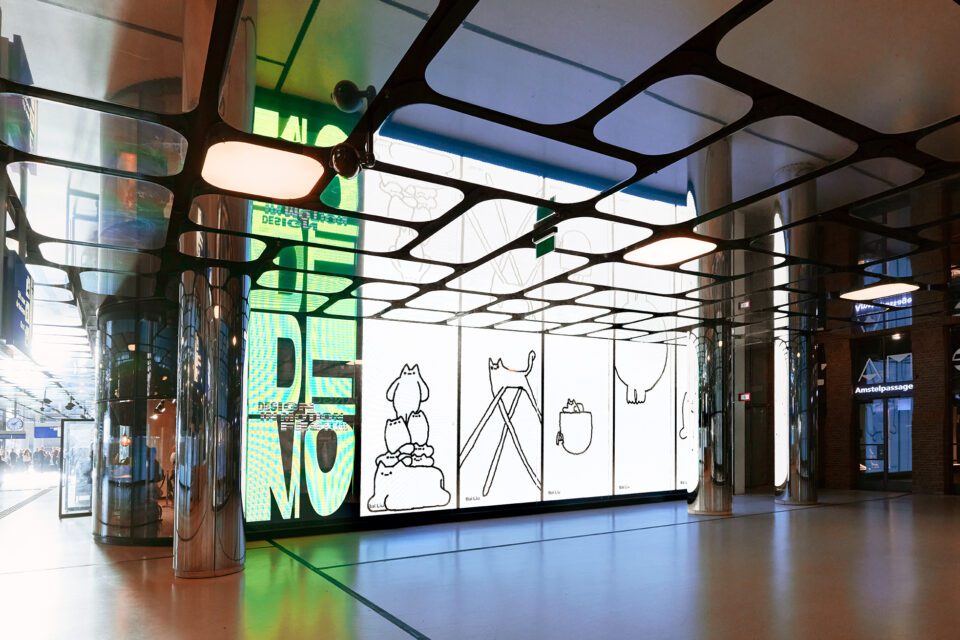
A: Creativity and technology continue to overlap, most recently with the rise of NFTs. What digital media are you most excited about right now?
BL: I’ve been thinking about the final ending of contemporary art, and perhaps the NFT art form is one of the possibilities for the future of art, and from February to May 2022 I worked with Charming Beats’ band The American Dollar on an animated music video based on the NFT form. In May 2021 I also made my own attempt to build a series of virtual fashion artwork in the metaverse, which I will also consider selling them on the NFT market this year.
A: How do you see your practice developing over the next five years?
BL: In the short term I would like to pursue more in-depth study and work opportunities in the three main areas of digital media design, poster design and print design. So I’ve decided to pursue a master’s degree in 2023. As I have had a very strong interest in the theoretical and practical development of the art and design disciplines from a young age, I’m considering for further study at PhD level after working for two or three years and gaining sufficient practical work experience, in the hope that I can further explore the current system of art and design in the future.
A: What do you hope to achieve with your multidisciplinary work?
BL: Just as I am currently focusing on the integration and development of art design with science technology in my academic field, I believe that as science technology have penetrated into every aspect of our lives, traditional art forms should not be stagnant, but should be actively integrated with technology to create more outstanding works. I hope that the many interdisciplinary works that I have created will open up a path for the integration of art and technology.
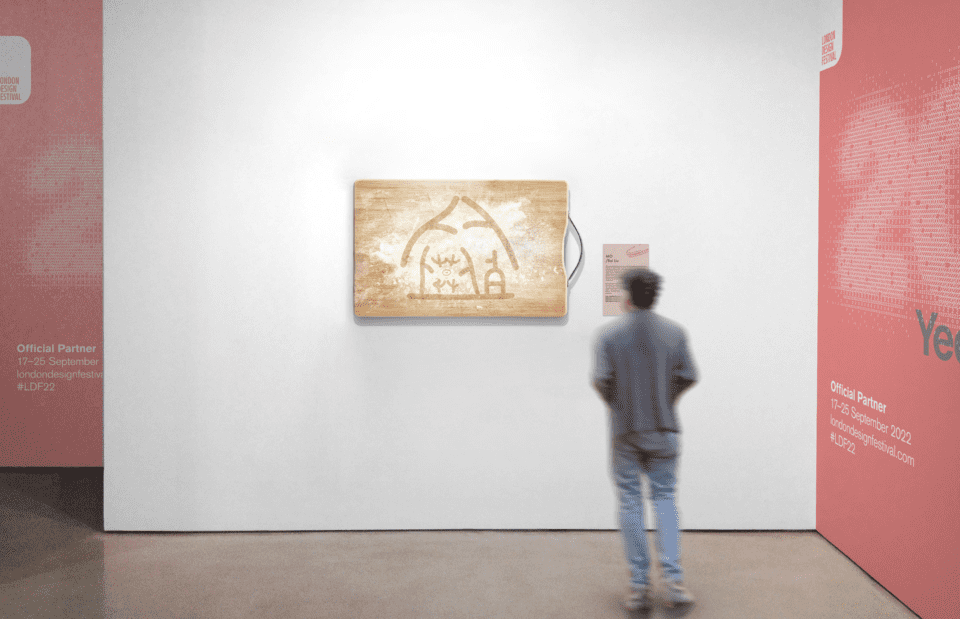
A: Where can we see or engage with your work next?
BL: From November 2022 to December 2023, I will have public exhibitions in at least four countries around the world. The most recent public appearances were at the 34th Girona Film Festival in November and at the ICE BREAKING art exhibition in Shenyang, China in December.
www.behance.net/boyceliuart I Twitter: @boyceliuart
All images and videos courtesy of Bai Liu.
The work of Bai Liu appears in the Artists’ Directory in Issue 109 of Aesthetica. Click here to visit our online shop.
Lead image: Why Do We Love Cats? November 2021. Film Installation Art. Online VRChat, Duke Kunshan University, USA & China.
Image #3. Liu, Bai. Why Do We Love Cats? November 2021. Film Installation Art. Mofun Art Space, Chengdu.
Image #4. Liu, Bai. MO/馍. May 2022. Film Installation Art. London Design Festival 2022, London.
Image #5. Liu, Bai. JIN SHAN: THE CYCLE OF LIFE. December 2021. Garment. Page 63, Issue 76, London Runway.
Image #6. Liu, Bai. Why Do We Love Cats? November 2021. Film Installation Art. Mofun Art Space, Chengdu.
Image #7 & #8. Liu, Bai. Why Do We Love Cats? I-VI. December 2021. Motion Art. DEMO-Design in Motion Festival 2022, The Netherlands.
Image #9. Liu, Bai. MO/馍. May 2022. Film Installation Art. London Design Festival 2022, London.





